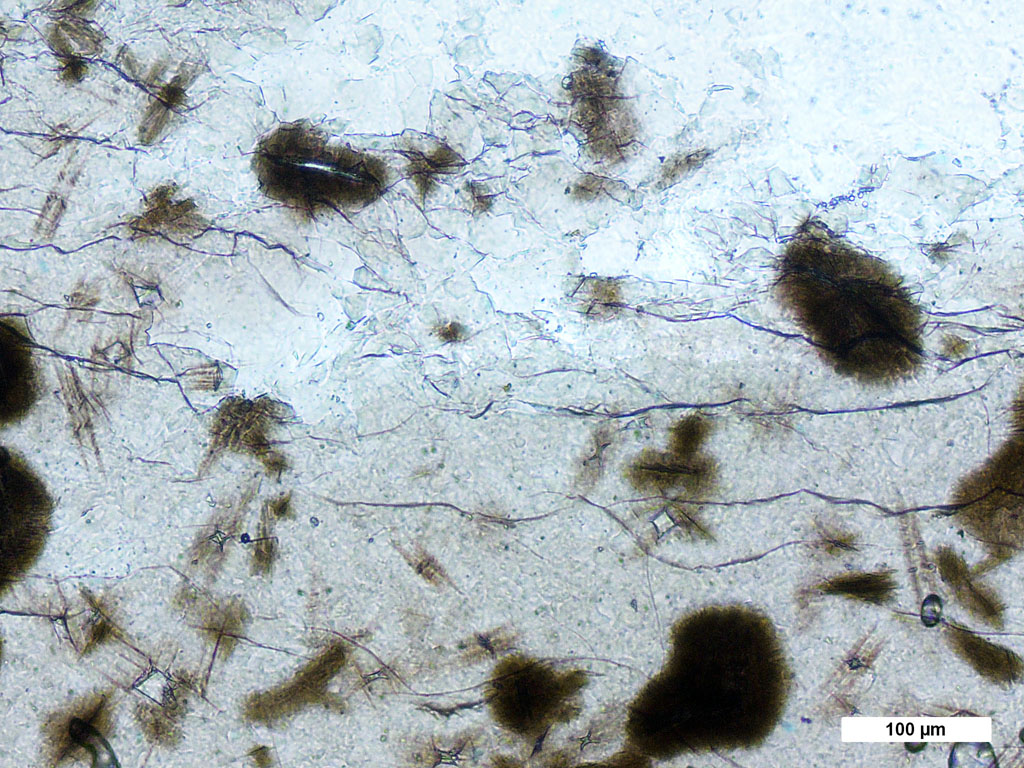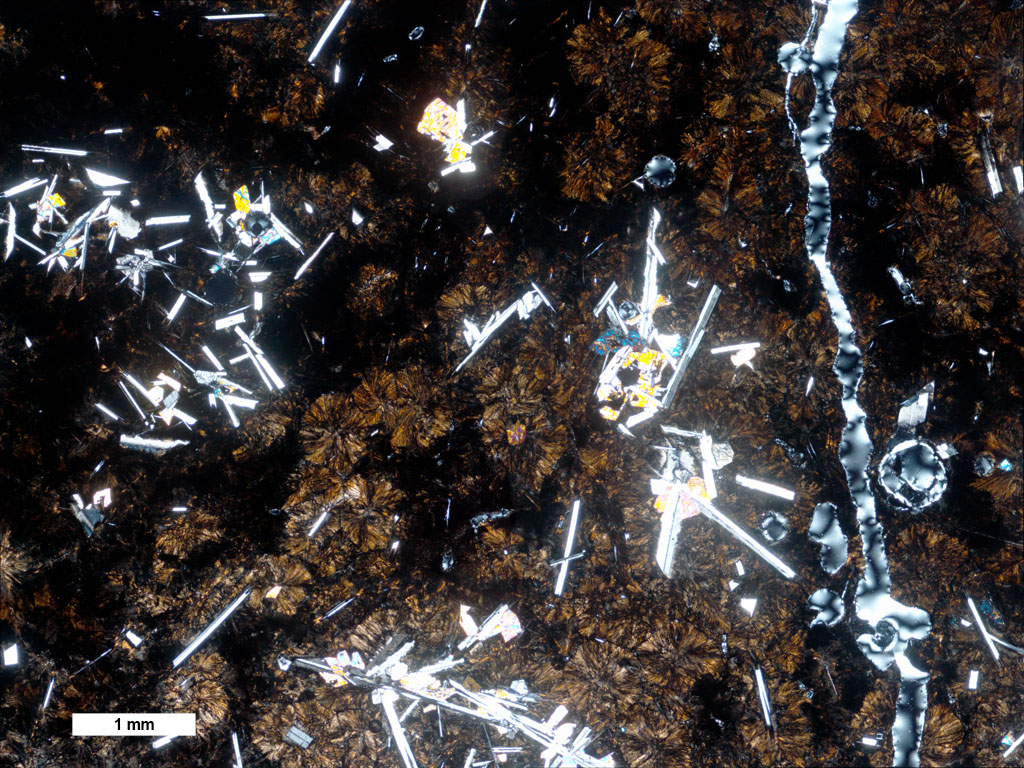1.5 MORB Petrography: Textures (continued)
Holohyaline rocks and glassy crusts imply rapid cooling and are inherently unstable and devitrify with time. Commonly, quenched MORB will display several key textures that reveal this rapid cooling (as opposed to basalts erupted subaerially, that cool more slowly). These quench textures include radially grown plagioclase and pyroxene in fascicular (bundle-like) to variolitic (spherical radial crystal growths) intergrowths (see Figure 1.11). In addition incomplete crystallization during rapid cooling also result in crystals with swallow-tail structures and hopper forms. Figure 5 shows pictures of some of these textures.
Phenocrysts typically comprise < 10% of the overall modal mineralogy, with early forming phases being the major phenocrysts. These commonly include olivine and plagioclase, however, in evolved MORB magmas clinopyroxene can be a prevalent phenocryst phase. Although less common, porphyritic lavas having much more abundant phenocrysts are also observed. Because MORB crystallize relatively quickly even the first formed crystals are commonly quite small (< a few mm) and thus called “microphenocrysts”. Large (cm-sized) phenocrysts are rare and the presence of such large crystals is often due to the entrainment of xenocrysts (foreign crystals that formed in another magma and were incorporated into the lava prior to eruption. Textures that show intergrowth of multiple phases (both in the phenocryst assemblage and in the groundmass) are indicators of phases that crystallized cotectically (simultaneously). Density differences among these phases and circulation in a magma chamber may also cause glomeroporphyritic textures (groups of phenocrysts that are “stuck” together) .
As magma chemistry changes (evolves) through crystallization or magma recharge, early forming phenocrysts can become unstable in the changing liquid composition or temperature. This will result in the growth of new chemical zones around the edges of the existing crystal (crystal zoning) or in some cases phenocrysts may begin to be resorbed into the magma resulting in disequilibrium textures. Rounded anhedral to subhedral grains are commonly observed in olivine phenocrysts that become unstable in evolving magmas. Disequilibrium plagioclase can become sieve-textured displaying a “moth-eaten” appearance. Plagioclase and pyroxene typically display compositional zoning in response to changing magma chemistry, but such zoning is less-well preserved in olivine (solid-solution changes in chemistry occur more rapidly and completely in olivine compared to plagioclase or clinopyroxene).

Figure 1.10. MORB Thin Section. Quenched microlites in glass. Click on the image to see a larger interactive version.

Figure 1.11. MORB Thin Section. Fascicular to variolitic textures surrounding cotectic intergrowths of plagioclase feldspar and olivine shown in overexposed crossed polarized light. Click on the image to see a larger interactive version.